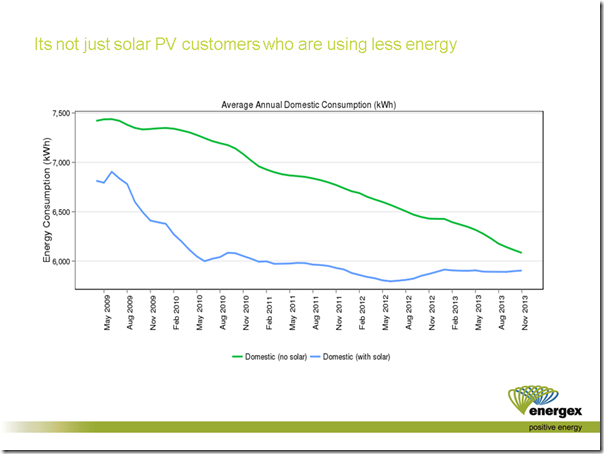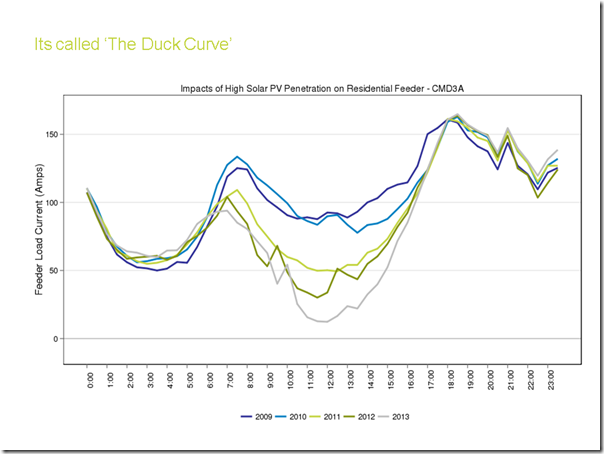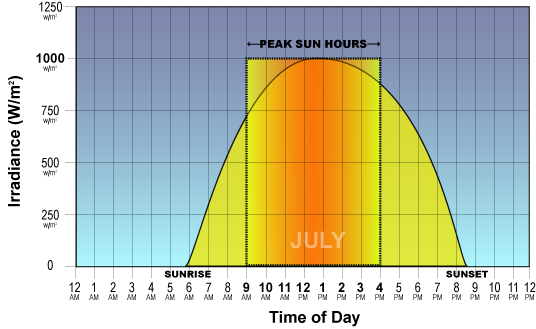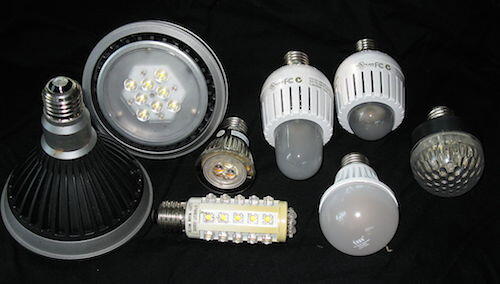Anyone who has done some investigation into having solar panels installed in Australia should by now understand that the whole endeavour only makes economic sense if the home in question ‘self-consumes’ as much of that solar power as possible. Solar feed-in tariff incentives having dried up in every state, the business case for going solar is now based on how much of their ordinary electricity usage that a home can source from their solar panels directly as opposed to purchasing it from the grid. The status quo basically calls for solar homes to try to be as energy self-sufficient as possible to make the most of their investment.
(Part 2 of this series looks at household electricity patterns.)
Paul McArdle of WattClarity recently brought up some interesting points on this topic when he took a look at ‘the buzz about solar PV‘. In his writing he makes reference to a talk given by Mike Swanson of Queensland utility Energex at an event called “Energy in 2014: More mines than field“. Among the graphs that Mr Swanson showed during this talk were 2 that tell a story, and although the exact details of that story are not yet fulling clear, the fact that distributed rooftop solar PV is having a major impact on the electricity industry is unquestionable.
Rooftop solar now comprises 5% of Australia’s electricity generation capacity. According to industry analysts SunWiz, 41-42% of suitable homes in Queensland and South Australia already have solar panels; in the other states, this percentage ranges from 13%-31%–still significant.
The chart below offers a glimpse into how all this capacity has affected Australia’s electricity market. More specifically, it shows how solar has helped to shave off daytime electricity demand, generally meaning that less conventional, fossil fuel-fired generation needs to be brought online to ensure the supply-demand balance is met.
Solar homes vs energy efficient homes: Who saves more?
But, as Mr McArdle notes, the role of solar PV may only be part of what’s going on, with the full story being more complex. The next graph illustrates how electricity consumption patterns between solar households and non-solar households compare with one another. Namely, it shows a relatively sharp drop in electricity consumption among solar households, while non-solar households seem to be reducing their consumption more gradually.
 WattClarity offers up a few possible explanations for these trends. The solar situation seems relatively clear: greater, ‘behind the meter’ self-consumption of solar power means less of a need to purchase power from the electricity grid. The non-solar household situation is most likely a story of gradual energy efficiency improvements (e.g. replacing old appliances & installing insulation) combined with skyrocketing electricity prices (prompting consumers to try to use less) would seem to be the driving forces behind falling demand in these cases. What seems obvious is the fact that solar homes have greater potential for reducing their electricity bills–especially if they minimise their grid electricity consumption and maximise their solar power consumption.
WattClarity offers up a few possible explanations for these trends. The solar situation seems relatively clear: greater, ‘behind the meter’ self-consumption of solar power means less of a need to purchase power from the electricity grid. The non-solar household situation is most likely a story of gradual energy efficiency improvements (e.g. replacing old appliances & installing insulation) combined with skyrocketing electricity prices (prompting consumers to try to use less) would seem to be the driving forces behind falling demand in these cases. What seems obvious is the fact that solar homes have greater potential for reducing their electricity bills–especially if they minimise their grid electricity consumption and maximise their solar power consumption.
Important considerations for current and future solar system owners
(Skip to the bottom for a summary checklist)
In addition to the thought-provoking ‘Questions for policy designers’ that Mr McArdle includes at the end of his article, these graphs also prompt some very pertinent and important questions for would-be and current solar system owners, mainly with regard to how they choose their system’s size and how they use the power it produces once installed. The chart above clearly demonstrates that electricity usage for system owners is not descending on the same slope as non-solar homes. Could it be that these homes, already witnessing significant bill reductions (thanks mainly to the generous feed-in tariff incentives that many of them receive), become so lax as to cease pursuing any additional measures to reduce their power bills? In such cases, there should be even more of an opportunity for more savings and grid-independence.
Choose your solar system size wisely
As the International Energy Association (IEA) and Australian solar industry analysts SunWiz have pointed out, the average size of a solar system in Australia has grown significantly in recent years, thanks primarily to the increasing affordability of solar technology. Whereas 4 years ago most homes were opting for 1.5kW systems, nowadays the average size is between 4kW and 5kW for the nation as a whole. But how does any one household know if it’s choosing the appropriate system size?
Determine your daytime electricity requirements
These days, appropriately sizing your solar system is all about understanding how much electricity you use during daylight hours–you want to make sure you consume as much of your solar power as possible. If you look at your quarterly electricity bill you can easily get some idea of your overall daily usage (i.e. daylight & after-dark hours, usually around 20kWh/day for most 3-person homes) but discerning a higher level of detail is more difficult without taking inventory of which appliances use how much power and at what time throughout the day. This is a great option if you have the time and the means and plan on managing your usage in detail. Some solar installation companies may also help you to work this out in preliminary consultations.
A slightly easier (but less accurate) way to estimate daylight usage would be to come up with a percentage of daylight vs nighttime electricity usage. If, for example, you use around 20kWh in total on a daily basis, divide your appliances into 3 categories based on current usage: ‘Always on’, ‘on during the daytime’, and ‘on at night’. How many devices do you have in each category? How much usage from the post-sunset hours be shifted to daytime? Add up those from the first 2 categories and divide by the total to get a percentage, which you can then multiply by your total daily usage to get a (very rough) idea of what your daytime energy usage is. For example: 15 daytime & always on devices divided by 20 total devices equals 0.75, and 0.75 x 20kWh = about 15kWh. (Please note that this method is not exact, and will only yield a ballpark figure.)
Determine what system would best meet these daytime requirements
Depending on the amount of daily sunlight your region gets on average throughout the year, the system size that will best meet your demand will vary. If you live in Brisbane, for example, you can count on about 6.2 ‘peak sun hours’ (PSH) daily (more in summer, less in winter). Because 1kW of solar capacity in Brisbane will generate (1kW x 6.2PSH =) 6.2kWh, a 5kW system would generate around (5kW x 6.2PSH =) 31kWh of solar power–clearly too much for the home in our case study above which uses 15kWh during the day.
Example of solar intensity and peak sun hours (PSH) throughout the day. (Image via JS Solar.)
Since the excess solar energy will automatically be sold into the grid at a nominal rate (about 8¢/kWh) as opposed to saving you 25¢/kWh or more in avoided electricity purchase, solar homes should endeavour to use all of the solar electricity themselves. A more appropriately-sized system might be more in the range of 3kW in capacity, as 3kW x 6.2PSH equals around 18kWh. Slightly smaller would be even better, to avoid ‘leakage’.
Take electricity consumption into your own hands
For many households, thinking about and acting on high electricity bills is likely to stop with the installation of their system. But for the home that is serious about getting the absolute most out of their solar panels, there’s plenty more to be done. Electricity consumption levels and timing are not fixed. In fact, electricity consumption is something over which a home’s occupants can actually exercise a large degree of control, either by increasing vigilance about not leaving unused devices on or plugged in, by improving insulation in the home, or by replacing old devices with newer, more energy-efficient ones. (Getting a home energy audit is a great place to start.)
Ultra-efficiency (and increasingly affordable) LED light globes are one way that homes can reduce their electricity consumption. (Image via Wikipedia.)
The green line in the second chart above demonstrates fairly clearly that electricity consumption levels (and therefore bills) can be cut even without solar. But with solar, the potential for savings is multiplied: if a solar home managed to shift as much of its It’s not clear whether the solar households represented by the blue line have already taken energy efficiency measures, but assuming they have not (undoubtedly the case for many), the situation gets slightly more complicated and interesting as we enter the more nebulous realm of the hypothetical.
If a solar system is sized to meet the daytime electricity demand of a house, and then that demand declines thanks to steps taken to reduce consumption, the system owner will end up sending more electricity into the grid. While this will earn credits for the system owner on their electricity bill, at this point these credits (at around 8¢/kWh) are quite meagre considering solar’s ‘offset value’ (25¢/kWh or whatever the cost of grid electricity is). While this may look like a ‘loss’, it would still result in a smaller power bill provided the energy consumption reductions don’t require much capital outlay. Less electricity consumed is less electricity purchased and a bigger credit on the power bill.
By all means, homes should aim to reduce their electricity consumption both before and after going solar. But this brings us back to the importance of appropriate solar system sizing: To undersize is to err on the side of caution, as long as a household isn’t expecting to increase power usage in the near future (due to, for example, an addition to the home or the family that lives in it).
Monitor your solar system’s productivity
The term ‘prosumer‘ (producer-consumer) has become something of a buzzword in the electricity industry in the past several years. In addition to the ‘producer’ aspect, the term also denotes a tendency to be proactive in controlling consumption habits to ensure they’re saving the most money possible. The prosumer is differentiated from ordinary consumers, who are passive and make no effort to change their habits to save money. As more homes invest in solar systems and grow increasingly disgruntled at rising retail electricity rates, the number electricity prosumers grows.
The most vigilant prosumers will not only monitor and police their own electricity usage, they’ll also have a good idea of how much power their solar system produces and adapt their behaviour accordingly. There are countless tools available for this purpose, many of which allow remote monitoring. Most inverter manufacturers these days even build monitoring capability into their devices, or offer them as easy add-ons. Some companies (such as Sun Monitoz, Solar Analytics and Onyx Solar) offer complementary solutions which will give system owners a clearer idea of what their system should ideally be producing compared to what is in fact producing.
Checklist: How to get the most from your solar panels
To summarise the above points into 4 bullets:
- Choose your system size wisely by knowing your electricity usage levels and behaviour
- Know your devices and when to use them–which devices use how much power?
- Take your electricity consumption into your own hands–be proactive in reducing consumption by replacing inefficient devices, shutting off devices not in use, and shifting as much of your consumption to the daytime hours as possible
- Monitor your system’s output so that you know when to use electricity–and how much to use
© 2014 Solar Choice Pty Ltd



